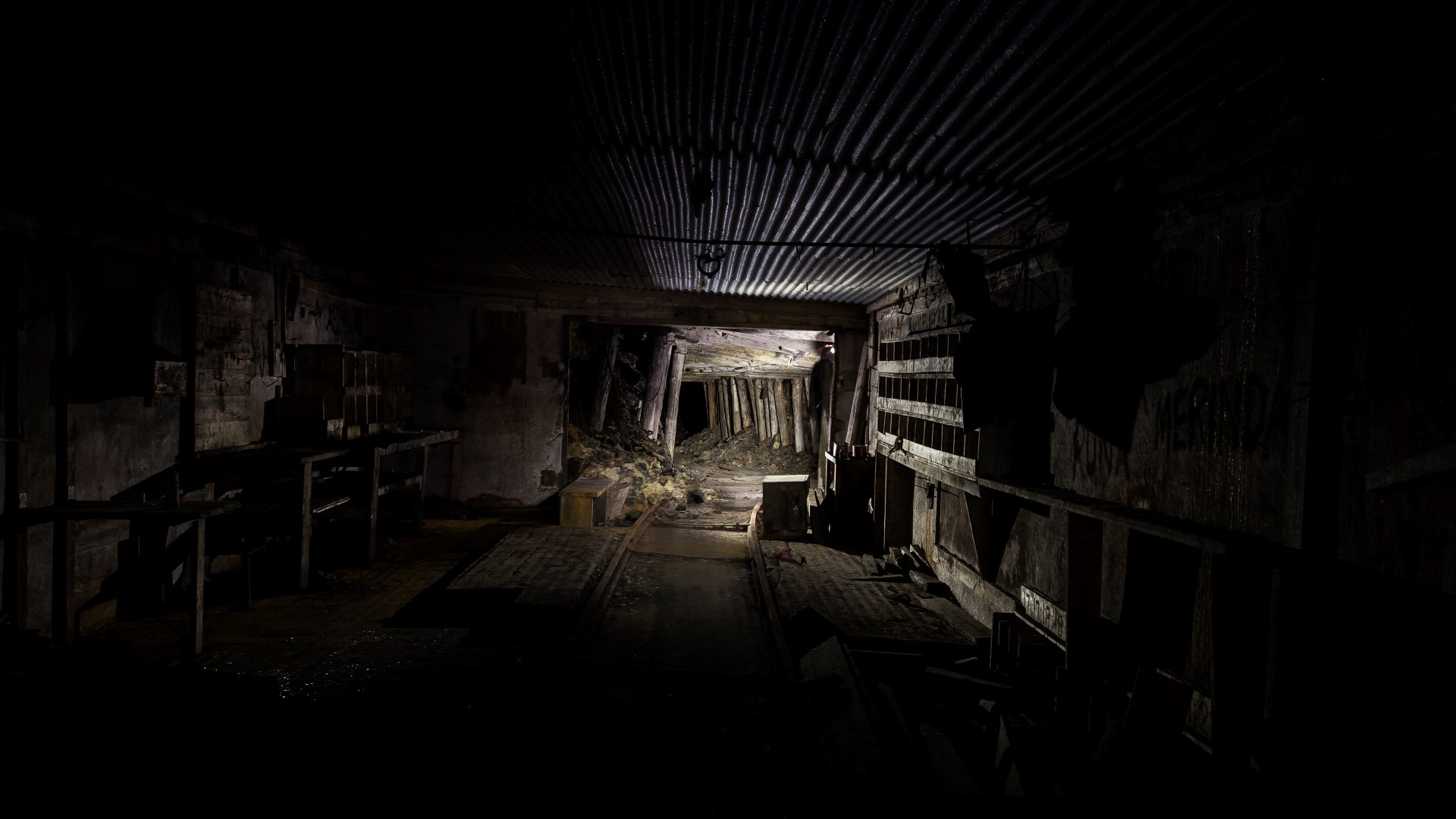- DateJuly 2015
- LocationLongyearbyen, Svlabard
- Photography & TextJonathan Danko Kielkowski
- In ShortShort story and report about the abandoned coal mine "Number 2" in Longyearbyen
Gruve 2
Svalbard | Story | July 2015
Arctic Coal Episode 3
As you walk through Longyearbyen you will find traces of its coal mining industry past on all corners. Small chunks as well as massive structures that shape the towns face. One of these traces is a old coal mine with the rather profane name, mine number two. It is located on one of the steep mountainsides 250 meters above the town and its pithead is visible from far away.
The locals call it the Santa Claus mine. Regarding a local legend it is the summer home of Santa. Every Christmas season a mailbox is placed on the road below the mine so that local kids can place their letters to Santa in the box, hoping that Santa will come down from the mine and give them the toys they’ve asked for. Its save to say that this legend must have its origin quite far back in the past since the pithead in front of the mine entrance nowadays looks rather more like a hideout place for some super evil villain than the summer home of Santa.

- HistoryMine 2 was first opened in 1913, had a high production for several years and was eventually driven through the entire mountain massif. In 1937, production was stopped at the first point of entry and a new point of entry (Mine 2b) was located further south. During World War II, Mine 2 was shot in the fire by the German battleship "Scharnhorst" as part of Operation Sizilien in 1943. The mine burned until 1962. After the end of the war, work began to resume operation in Mine 2, and in 1947 production started. The entire mountain massif between the Longyear Valley and Endalen is thrived, with vent holes and stool openings along the mountain sides. In January 1952, the mine was hit by a gas explosion, where six men died. There was production stall in Mine 2 in the period 1960 - 1964 when Mine 5 was opened and at the same time it was in coal prices. Then coal production was resumed until the mine was expelled in the winter of 1967/68.
The steep climb up over loose gravel and mud is exhausting but once you reach the pithead you efforts will be rewarded with an great view over the bay and well, the mine itself.
The pithead contain workshops, offices and coal silos where coal from the mine was loaded on to cable cars. Tools and personal belongings from the miners can still be found between debris, snow and ice. But unfortunately no signs of Santa.
Usually the entrances in this area freeze up soon after they are abandoned. Entering the mine is than impossible. But we were lucky. After exploring the pithead for an hour or so we spotted that one of the entrances was still accessible. There was a small gap between the ice and the ceiling of the mine through you could squeeze yourself in. Since it took a few minutes of scrolling like a snake before the ice got lower you better be not claustrophobic.
The inside of the mine was in a worse shape than the pithead. Workshops and tunnels inside the mine were either badly damaged or already collapsed under the pressure of the mountain. Exploring the mine was kind of a dangerous obstacle course inside a dark labyrinth. Well and a rather short one. After only 20 minutes inside the mine we had explored all the tunnels that were still accessible and decided to go back to saver grounds. The summerhouse of Santa, pff yeah for sure…
- Arctic Coal Episode Index
- Intro Arctic Coal
- Longyearbyen Coal Crane
- Longyearbyen Gruve 2
- Longyearbyen*
- Barentsburg
- From Barentsburg to Longyearbyen Part 1 Grumantbyen
- From Barentsburg to Longyearbyen Part 2 Colesbutka
- From Barentsburg to Longyearbyen Part 3 Drill Rigs
- Pyramiden*
- The Pyramid*
- *not published yet















Comments